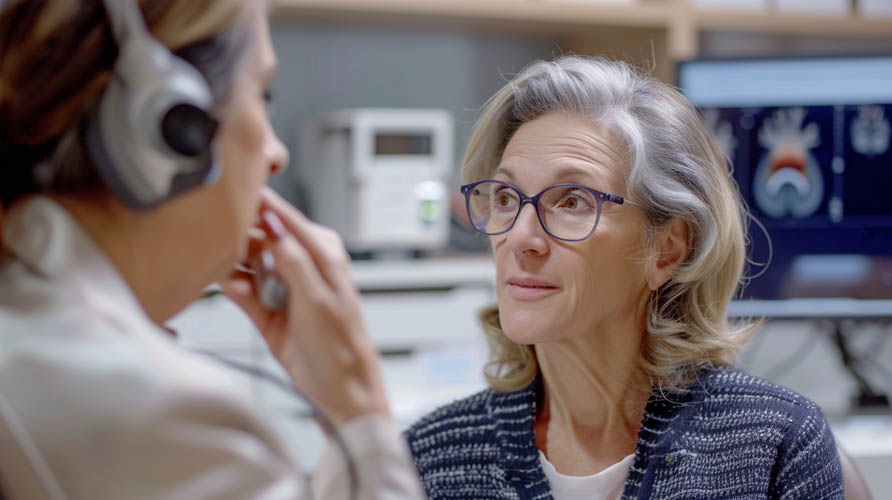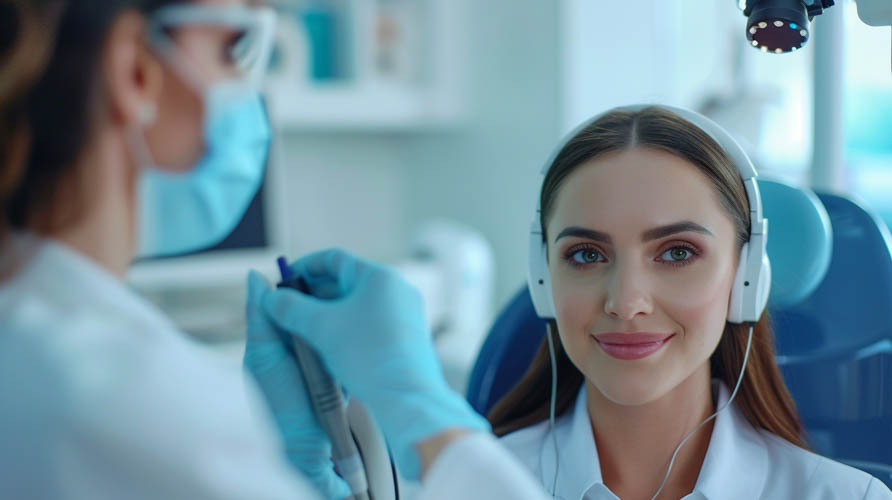Addressing age-related hearing loss can be challenging, but specific tests can assist. Pure-tone audiometry evaluates your ability to hear sounds at various pitches and volumes. Speech audiometry assesses how well you understand spoken words in different conditions. Tympanometry measures your eardrum’s response to air pressure, identifying middle ear issues. Auditory Brainstem Response (ABR) tests your brain’s reaction to sound, and otoacoustic emissions (OAEs) evaluate the inner ear’s response to sound. These tests provide a thorough understanding of your hearing health, giving valuable insights for effective management. Stay tuned for more details.
Pure-Tone Audiometry
Pure-tone audiometry is the most common hearing test used to evaluate age-related hearing loss. If you’re experiencing difficulties hearing, this test will likely be part of your assessment. During the test, you’ll wear headphones and listen to a series of tones at different pitches and volumes. Each ear is tested separately to determine the faintest tones you can hear at various frequencies.
You’ll be asked to respond each time you hear a tone, usually by pressing a button or raising your hand. This helps the audiologist plot an audiogram, a visual representation of your hearing ability. The audiogram will show where your hearing falls within the normal range and pinpoint any areas of hearing loss.
Pure-tone audiometry is painless and non-invasive, taking about 20-30 minutes to complete. It’s crucial because it helps identify the specific frequencies where your hearing might be declining, which is often the case with age-related hearing loss. The results can guide the recommendation for hearing aids or other interventions. By identifying hearing issues early, you can take proactive steps to maintain your quality of life and communication abilities.
Speech Audiometry
In speech audiometry, you’ll be tested on your ability to hear and understand spoken words at various volumes. This test is crucial because hearing loss isn’t just about the inability to detect sounds; it’s also about understanding speech, especially in noisy environments. During the test, you’ll listen to a series of words presented at different decibel levels through headphones. Your task is to repeat the words back to the audiologist.

The test commonly includes two parts: speech recognition threshold (SRT) and word recognition score (WRS). In the SRT part, you’ll hear two-syllable words at decreasing volumes until you can no longer recognise them. This helps determine the softest level at which you can understand speech. In the WRS part, words will be presented at a comfortable volume, and you’ll repeat them. This assesses how well you can understand speech when it’s loud enough for you to hear easily.
Speech audiometry gives a more comprehensive picture of your hearing capabilities, which is essential for diagnosing age-related hearing loss. The results help audiologists tailor hearing aids or other interventions to improve your quality of life.
Tympanometry
Tympanometry measures the movement of your eardrum in response to changes in air pressure, providing valuable information about middle ear function. This test helps identify issues such as fluid in the middle ear, eardrum perforations, or Eustachian tube dysfunction, which can affect your hearing. When you undergo tympanometry, a small probe is placed in your ear canal. You’ll hear a tone and feel slight pressure changes, but the procedure is quick, painless, and non-invasive.
During the test, the device measures how well your eardrum moves in response to the changes in pressure. The results are displayed on a graph called a tympanogram. A normal tympanogram shows a peak, indicating that your eardrum moves well in response to pressure. Abnormal results might show flat or irregular patterns, suggesting issues that could require further investigation or treatment.
Tympanometry is particularly useful for diagnosing conditions that contribute to age-related hearing loss. For instance, it can detect early signs of otosclerosis, where the bones in your middle ear stiffen, impeding sound transmission. By identifying these issues early, you and your healthcare provider can develop an effective treatment plan to manage your hearing health.
Auditory Brainstem Response (ABR)
When assessing age-related hearing loss, an Auditory Brainstem Response (ABR) test can provide crucial insights into how well your auditory nerve and brain pathways are functioning. This test measures the timing of electrical waves from your auditory nerve to your brainstem in response to sound stimuli. Essentially, it helps determine how your brain processes sound, which can be particularly valuable if you’re experiencing hearing deficits that typical hearing tests cannot explain.
During an ABR test, electrodes are placed on your scalp and earlobes. You’ll wear headphones through which a series of clicks or tones are played. The electrodes record the brain’s activity in response to these sounds, and the resulting data can help pinpoint any issues.
Here is why an ABR test might be recommended:
- Non-invasive: The test is simple and does not involve any discomfort.
- Detailed Analysis: It provides a detailed look at the auditory pathway’s functionality.
- No active participation needed: Ideal for those who may have difficulty responding to conventional hearing tests.
- Quick and efficient: The test usually takes about an hour, making it a practical option.
ABR testing is a valuable tool in the fight against age-related hearing loss, offering precise and critical insights into your auditory health.
Otoacoustic Emissions (OAEs)
If you’re looking to assess the function of the inner ear, Otoacoustic Emissions (OAEs) provide a non-invasive way to measure its response to sound. This test specifically evaluates the outer hair cells in the cochlea, which play a crucial role in hearing. During the test, a small probe is placed in your ear canal. This probe emits sounds and measures the echoes produced by the vibrations of the outer hair cells.
OAEs are particularly useful for detecting early signs of hearing loss, even before you notice any symptoms. The absence of these emissions can indicate damage or dysfunction in the cochlea. For age-related hearing loss, OAEs help pinpoint whether the issue lies in the outer hair cells or elsewhere in the auditory pathway.
The procedure is quick and painless, often taking just a few minutes. It’s especially valuable for those who can’t easily communicate their hearing difficulties, like young children or individuals with certain disabilities. By incorporating OAEs into your hearing health assessment, you get a detailed picture of your inner ear’s performance, guiding further treatment or interventions if necessary.



